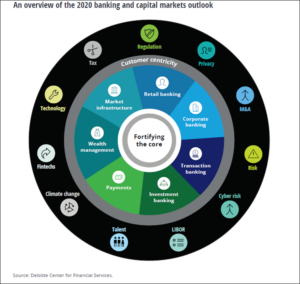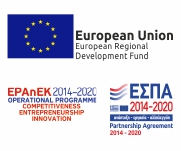27/10/2020 | By Nikos Karelos | Banking Director at Profile Software
In many instances, banking technologies help Banks to better address challenges and prepare for the future. However, available as it may be, it is common that technology is not always properly used.
Adopting new Banking Technologies
Financial institutions across the world have not always been keen on adopting new technologies. Banking platforms are often used for years until they underperform. The “new normal”, however, leads Banks to behave more like FinTechs. For this reason, banks eventually realise that technology has evolved at such an extent that can greatly support banking capacity, system modernisation, better data quality with automated onboarding, market analytics, risk metrics and more.
The available technology toolset, combined with the needed human resource’s skillset, can create a totally new banking landscape.
Technological disruption affects the banking industry
Highlighted in Deloitte’s report on the “outlook” for the industry, a new, forceful, wave of disruption is coming, even before the pandemic, so imagine the need for digitalisation post-Covid. The combined effects of this technological disruption will greatly affect the banking industry. Banks need to re-evaluate their platforms across multiple dimensions in order to exploit the opportunity that comes with every disruption, modernising their systems to support:
- Tailored products – customers are the asset, the offering needs to be close to their needs, while safeguarding Bank’s revenue
- Real-time transactions – this becomes the norm for the banking of younger generations
- Top quality of data – data analytics is paramount now, and no Bank can rely on poor data to make decisions, nor have large cost overheads on data normalisation and cleansing
- Deployment to take place in stages as the bank grows – it is imperative that system modernisation develops in line with the Bank’s current operations with technology efficiently supporting this approach
- Human capital through automation of processes – Bank’s personnel are valuable assets that may shift their focus from system operational tasks to more productive activities, provided that the majority of operations are automated by the systems
As shown in the graph, customer-centricity of systems plays a major role while digital transformation is affecting all business segments, as technology eases and automates tasks related to all major business areas in the banking environment.

Digital transformation for banking
As mentioned in the “Financial brand”, the focus is on digital transformation for banking, what banks can do to increase their customer base, build their brand and deliver quality service on time. This is achieved by a series of steps.
It is worth mentioning that 53% of institutions surveyed stated they have a Digital Account Opening (DAO) service, however, almost half the customers mentioned they had to visit a branch to complete the process. But how can one bridge this gap?
- By investing in technology tools to help banks achieve 100% mobile/online client onboarding.
- By investing in a platform that would safely store client details.
- By trying to be close to customers regardless of location.
- By educating customers on how to digitally perform the common banking operations.
However, the new era does not only focus on the end customer. It also focuses on modernisation of the internal bank processes, improving employees efficiency and reducing time-consuming procedures, so as to offer competitive services.
This involves:
For Retail banking, organisations need to achieve:
- Growth through digital channels – increase in deposits and loans
- Use of APIs in the ecosystem so that the Bank owns the customer relationship and offers good advice
- Increased penetration of digital credit origination
For Corporate banking, technology can help institutions gain from:
- Holistic credit evaluation – in combination with Open Banking
- Real time transactions
- Boosting operational efficiency through digitisation
Learn how modern banking platforms have evolved to automate processes, offer better quality data integrating with existing legacy platforms, utilise unlimited APIs for faster instant payments and use various digital channels to boot sales. Ask us about the level of automation Profile’s banking platforms can deliver to users and enable banks to increase their digital reach. The Microsoft Azure-ready Banking platform has already been deployed [in the cloud] in a UK-based successful Digital Bank allowing them to manage their operations during lockdown as.. normal!









